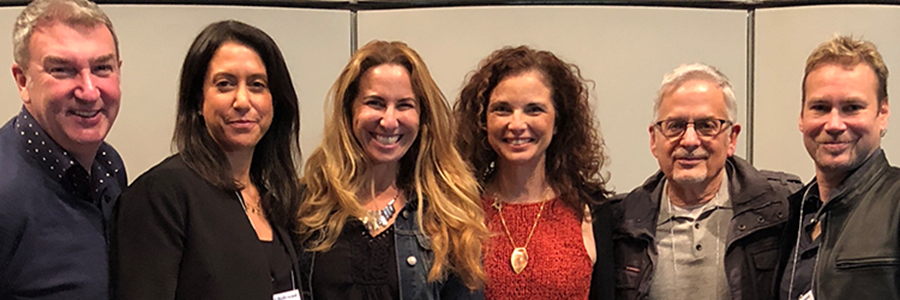

VR is a Numbers Game
Recently I had the opportunity to moderate an important panel at the spring Digital Hollywood where there was no shortage of brilliant minds.
Joining me and a hundred or so attendees was:
• Roy Taylor, former head of VR production for AMD and BAFTA Board member
• Camille Cellucci, head of production for The Void
• Lora Feinman, head of sales forJaunt
• Joanna Popper, head of place based entertainment for HP
• Joel Douek, Co-Founder, ECCO VR and Creative Director, Man Made Music
They all have an opinion on the state of VR, and some of it wasn’t so good.
A couple of pain points for everyone includes, a lack of standardization, and the general view that VR is a technology and not a medium (these 2 points alone are topics for another discussion).
Roy Taylor, who describes himself as one of the loudest pro VR voices out there, describes the industry life cycle thusly:
We are approaching the 4th level of immersive media.
Level 1 being The 70’s when the tech was about Enterprise (flight simulators, medical, etc.) Level 2 was the 80’s when Mattel, Sega and Atari entered the fray (and when the words “Virtual Reality” truly blossomed) Level 3 was the 90’s (on up to today), which opened the floodgates of development and creativity for consumers, and on to the 4th level, the future (which is now btw), location based and experiential.
He didn’t say VR is dead, but he was clear that “VR for consumers is flat and enterprise and location based VR is a success.”
Joanna Popper isn’t so downbeat, but when she talks about HP’s 4 areas of focus: architecture, engineering and construction; location based entertainment; military and first responder training and simulation; and healthcare. It sounds like that’s a look into Roy’s level 4 too.
This is a long way from consumer head-gear but Popper says, “the industry has had to pivot into areas where they’re seeing more growth.”
Lora Feinman says Jaunt is doing a deep dive into place based experiential immersive media (but not abandoning their outstanding content distribution business) by “creating immersive content for brands that allows them to connect with their consumers in a whole fresh new way.” And coupled with their legacy business, offers a big piece for users “to get this content wherever they are and wherever they can experience it.”
And The Void seems to be the closest to the holy grail of VR.
Camille Cellucci’s company takes us into new territory with a location-based experience which is more than just sight and sound. The Void is a “location based, hyper realistic experience that is multi sensory.” And when you do get to try it at one of their 8 locations, either as a Stormtrooper in a StarWars scenario, or on a Ghostbusters assignment, you get to experience it with other people, talk to them during the experience, touch things, feel things, shoot things, and experience things through haptics that are eerily compelling. That is true social interaction in VR.
But Joel Douek says “without the right kind of sound, none of it works.” He says “sound is more than 50% of the available experience yet it’s not being harnessed to its fullest.”
In the 360 space you need tools to be able to direct the audience’s attention. Sound can help influence that and make the overall experience come to life.
As you can see, it’s a numbers game. 4 levels, 4 focal points, 2 business opportunities (place based and home), and 50% of every experience is the sound!
Clearly, Joanna Popper is on to something when she says, “most consumers will get their first VR experience for the price of a ticket.”ECCO VR, ManMadeMusic